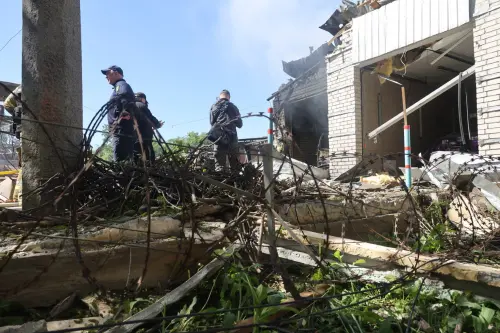The night of July 22 must have brought calm, relaxing rest to the American people. Never mind that the 9/11 Commission had warned that morning that American security against terrorist attack was still woefully inadequate, that six more hostages had been reported captured in Iraq, or that a CIA official was leaking word that Iran, well on its way to a nuclear bomb, continued to exploit ties with Al Qaeda. No, Americans could rest easy that night because July 22 had been a “historic day” marking “the end of an era where we have not been able to defend our country against long-range ballistic missile attacks.” We were safe at last.
Those were the words of the Missile Defense Agency (MDA), charged with defending the country from missile attack. Before September 11, this was one the president’s great hobbyhorses—his administration used to enjoy painting a picture of terrorists armed with ballistic missiles threatening American security. That imagery disappeared after the 9/11 attacks, a casualty of aggressively imposed reality, but the missile defense project continued, with increased spending and a shortened deployment schedule. George W. Bush promised a missile defense before his term was out, and superficially, he has delivered.
Substantively, though, he has not. Important research and development has been pursued, particularly on promising “boost-phase” technology that the Clinton administration ignored. But the program’s centerpieces—the interceptors now being emplaced in Alaska—add little if anything to American security.
For starters, the interceptors have never succeeded in realistic tests. The MDA press release tries to paper over that, declaring that “At the system level, we have been successful in four of the last five flight tests. …” What that means is that they’ve made sure that all the parts of the system will work together. But this completely avoids the central problem: The individual parts don’t yet work by themselves. It’s as if Edison had declared that electricity was flowing from his generator to his light bulb, but neglected to make sure he had a functioning light bulb design to begin with.
The incomplete testing is only half the problem. Even if the system one day meets its specified requirements—and there’s no reason to doubt that it can—those requirements may not be realistic. A decades old debate over the likelihood and effectiveness of enemy countermeasures, such as faux-warheads used to confuse the defense, shows no sign of abating. If the MDA takes a conservative approach and assumes it must defend against possible countermeasures, the current system may never be able to meet its goals.
Against a quickly evolving threat, though, isn’t some defense better than none? If such a threat existed, perhaps; but it’s not clear that the threat the new missile defense is designed to meet is anywhere close to existence. Near-term worries center around nuclear-armed rogue states, especially North Korea. Jane’s Defense Week caused a big stir last week when it reported that North Korea was in the advanced stages of developing two new long-range missiles, based on obsolete but still useful Soviet motors. The first missile, a land-based rocket, could not have reached the United States. The more worrying scenario involves engines for old Soviet submarine-based missiles used to build a new submarine-based rockets. Mated with several first-generation Soviet submarines that North Korea has purchased, those missiles could, theoretically, carry nuclear warheads and be used to attack the continental United States.
If the reports are true, they mean that North Korea is on its way to assured targeting for the American homeland. Doesn’t that justify the Alaska deployment? Well, no, since the defense, even if it worked according to plan, wouldn’t be able to protect against these missiles. The Alaska defense is optimized against North Korean missiles fired from North Korea, not all missiles North Korea happens to control. In contrast, the new missiles reported by Jane’s would be carried away from North Korea on submarines and be fired from considerably closer to the United States. Most likely, the Alaska system would be ill-placed to intercept them.
To be fair, despite its lack of utility, the Alaska deployment isn’t as bad as some suggest. It will not provoke the Russians or the Chinese to a retaliatory arms buildup; it’s unlikely to even provoke the North Koreans to the same. (If the North Koreans think the Alaska defense might work, and they want to counter the system, they’ve got much cheaper ways, like incorporating countermeasures into their missiles. Some might speculate that the submarine program is a response to the Alaska deployment, but since the sub program predates the decision to deploy in Alaska, that motivation is unlikely.) And it won’t delude American leaders into carelessly initiating hostile action, thinking they are safe behind the shield.
It will, however, waste hundreds of millions of dollars each year that could be better spent elsewhere. If the administration insists that the money stay within missile defense, it should directed towards research that could yield useful results. Better yet, it could be spent on other urgent needs, like securing nuclear materials abroad or protecting borders and ports at home. And regardless of where the money goes, the president should be humble. The “era where we have not been able to defend our country against long-range ballistic missile attacks” is far from gone.



Commentary
Alaska Missile Defense
August 11, 2004